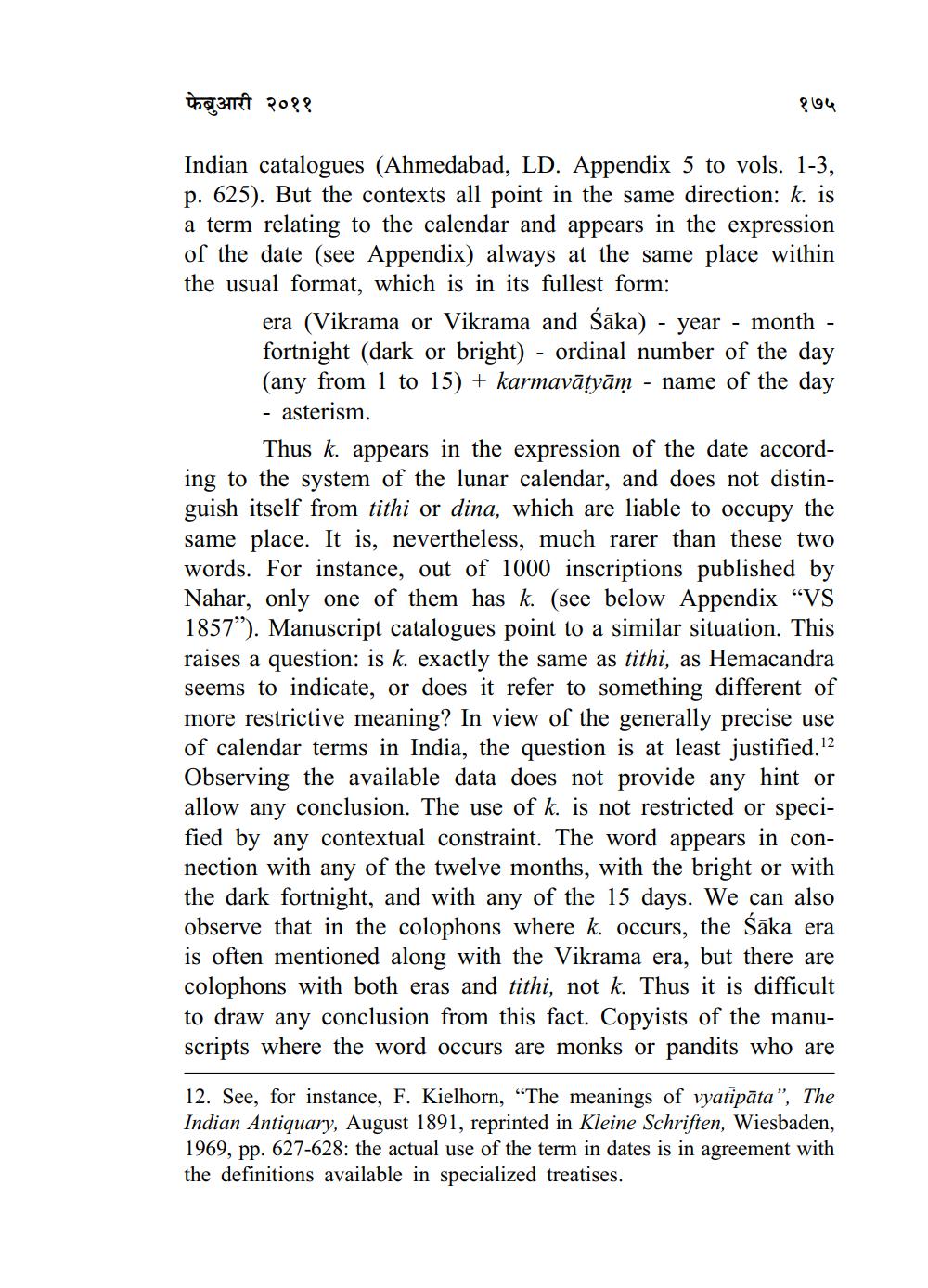Book Title: Note on Hemchandras Abhidhanchintamani and Sanskrit Karmavati Author(s): Nalini Balbir Publisher: ZZ_Anusandhan View full book textPage 9
________________ फेब्रुआरी २०११ १७५ Indian catalogues (Ahmedabad, LD. Appendix 5 to vols. 1-3, p. 625). But the contexts all point in the same direction: k. is a term relating to the calendar and appears in the expression of the date (see Appendix) always at the same place within the usual format, which is in its fullest form: era (Vikrama or Vikrama and sāka) - year - month - fortnight (dark or bright) - ordinal number of the day (any from 1 to 15) + karmavātyām - name of the day - asterism. Thus k. appears in the expression of the date according to the system of the lunar calendar, and does not distinguish itself from tithi or dina, which are liable to occupy the same place. It is, nevertheless, much rarer than these two words. For instance, out of 1000 inscriptions published by Nahar, only one of them has k. (see below Appendix "VS 1857'). Manuscript catalogues point to a similar situation. This raises a question: is k. exactly the same as tithi, as Hemacandra seems to indicate, or does it refer to something different of more restrictive meaning? In view of the generally precise use of calendar terms in India, the question is at least justified. 12 Observing the available data does not provide any hint or allow any conclusion. The use of k. is not restricted or specified by any contextual constraint. The word appears in connection with any of the twelve months, with the bright or with the dark fortnight, and with any of the 15 days. We can also observe that in the colophons where k. occurs, the Sāka era is often mentioned along with the Vikrama era, but there are colophons with both eras and tithi, not k. Thus it is difficult to draw any conclusion from this fact. Copyists of the manuscripts where the word occurs are monks or pandits who are 12. See, for instance, F. Kielhorn, “The meanings of vyatipāta", The Indian Antiquary, August 1891, reprinted in Kleine Schriften, Wiesbaden, 1969, pp. 627-628: the actual use of the term in dates is in agreement with the definitions available in specialized treatises.Page Navigation
1 ... 7 8 9 10 11 12 13 14 15 16 17 18 19 20 21 22 23 24 25 26 27 28 29 30 31 32 33
